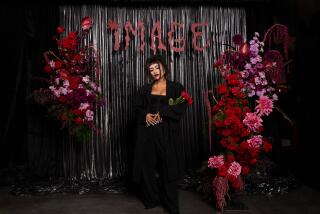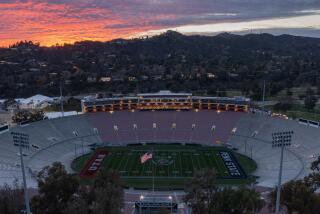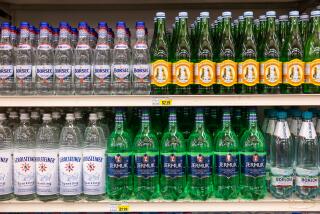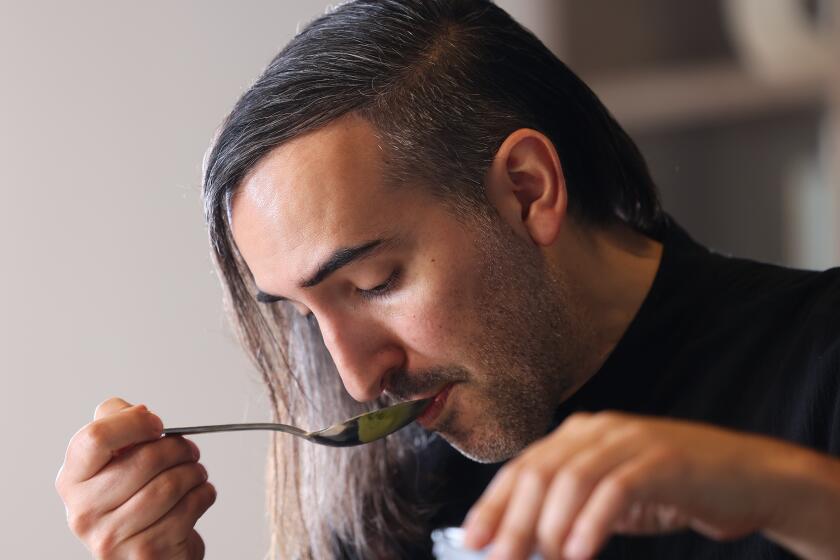Rose wine making a splash in the U.S.
Wine merchant Randy Kemner is tickled pink about rose.
Sales of blush vintages at his Wine Country store in Signal Hill are running 43% ahead of last year.
Thanks go to customers such as Tom Reep, 52, of Long Beach, who are starting to purchase dry rose after tiring of longtime summer standby Chardonnay.
“We were looking for something to drink outside on our patio or when we had something on the grill,” said the retired information technology executive as he bought a bottle of Chateau Martinette rose from Southeast France for $12.99. “Rose is so food friendly, it goes with everything.”
New drinkers are also catching on to the wine, typically made from juice squeezed from red grapes.
Nina Flores, 26, said her first taste of wine was of a pink -- the sweeter and ubiquitous white Zinfandel that seemingly every California winery makes. As her imbibing expanded, she started to sample crisp whites and bigger reds.
“Now I like to drink a dry rose, but only in summer. It is lighter, fruitier and great for the afternoons or picnics,” Flores said. At other times of the year the jury consultant from Long Beach goes back to favorites including the white Pinot Grigio or a red Syrah.
Flores and Reep reflect a national trend, said Brian Lechner, the alcoholic beverage expert at Nielsen Co., a market research firm.
Factoring out white Zinfandel, which by volume is about 9% of the table wine market, he said sales of rose wines priced at $6.50 or more had become one of the hottest segments in all table and sparkling wine categories, rising by about 39% nationally in the first half of this year compared with a year earlier.
Still, rose wines make up less than 1% of the $28 billion of all varieties that Americans purchase annually. Chardonnay remains the best selling, followed by Merlot and Cabernet Sauvignon. Although white Zinfandel is still popular, its sales are starting to slip, according to Nielsen.
“Today’s wine drinkers are more adventurous,” Lechner said. “They are more willing to experiment.”
The Nielsen numbers, which follow sales only in major grocery, drug and liquor chains, probably understate the trend, he said.
“We don’t track chains like Trader Joe’s and Whole Foods that do a better job with roses than the average supermarket or drugstore.”
At Wine Country, Kemner said rose sales probably got a boost from the shift in the start of daylight savings time to March 11.
“Sales of rose rise when it is light outside at dinner time,” he said, “and stay high until about Labor Day, when they start to fall off.”
But he said that changing culinary tastes had been just as important to the growth in the wine’s sales.
“In the 1970s a gourmet dinner took place at a French continental restaurant with a lot of butter-based recipes,” Kemner said. “Now we have a more Mediterranean diet where we have turned to olive oil, garlic and fresh herbs. That all goes with rose -- so our wine pallet is catching up with our food pallet.”
When Kemner first held a tasting of rose wines in 1996, only 13 people showed up. Last month, he sold 131 tickets at $15 each to his annual tasting of blush wines, and has scheduled a second tasting next month.
Most of what Kemner sells is imported, primarily from France and Spain. American winemakers, he said, have been slow to catch on to the trend.
That’s because in the past, a premium dry rose has been a hard sell, said Steve Edmunds, whose Edmunds St. John winery in Berkeley makes one from gamay noir grapes grown high in the Sierra Foothills.
“The market became conditioned against rose in the 1970s because it was so poorly made,” he said, “and it has taken a long time for perceptions to change.”
The development of stainless steel refrigerated tanks that provided winemakers better control of temperatures during fermentation made it easier to make good roses. Fermenting the wine at a cooler temperature helped preserve the fresh character that is so prized in dry rose, he said.
But when California winemakers turned to dry rose in recent years, they were tripped up by a propensity to have too high an alcohol content compared with European versions of the wines, Edmunds said. High alcohol gives the wine a hot feel and deadens the fruit. The grapes for Edmunds’ rose are grown east of Placerville at an altitude of about 3,400 feet.
“That allows the grapes to ripen at a lower sugar level and creates a wine with lower alcohol,” Edmunds said.
Edmunds is happy that more people are appreciating dry rose vintages. He has always made it, even when it wasn’t a commercial success for a simple reason: “I like to drink rose.”
--
More to Read
Eat your way across L.A.
Get our weekly Tasting Notes newsletter for reviews, news and more.
You may occasionally receive promotional content from the Los Angeles Times.











